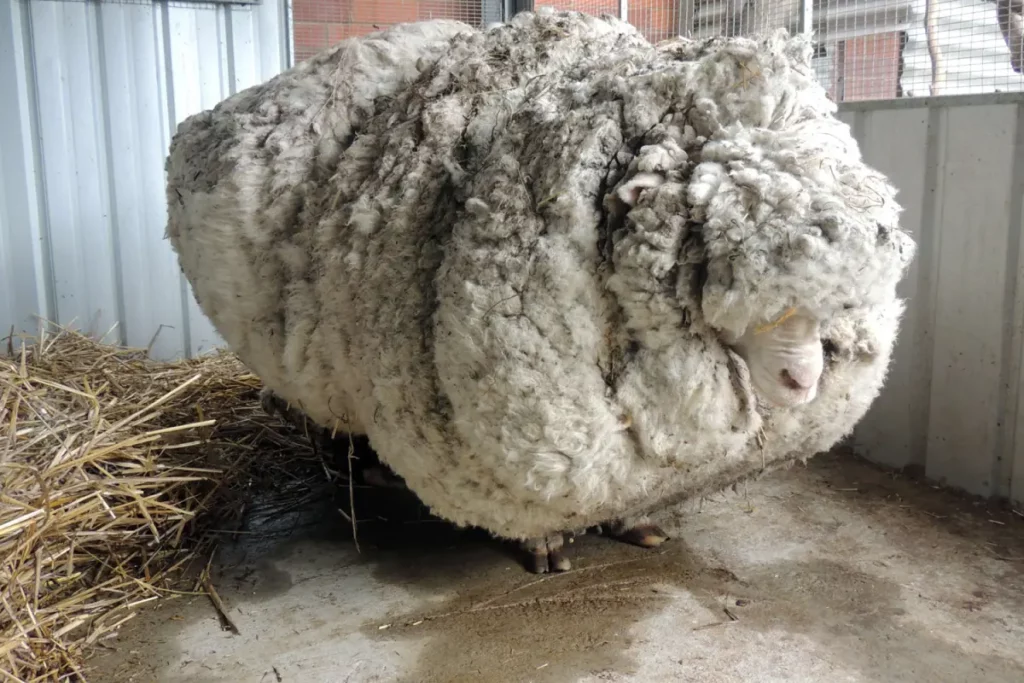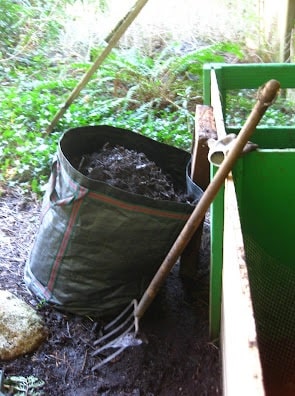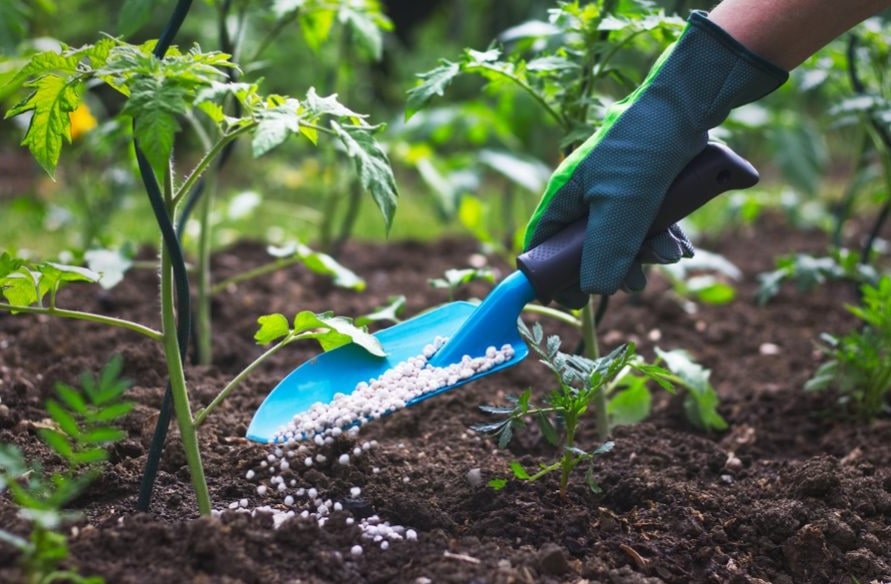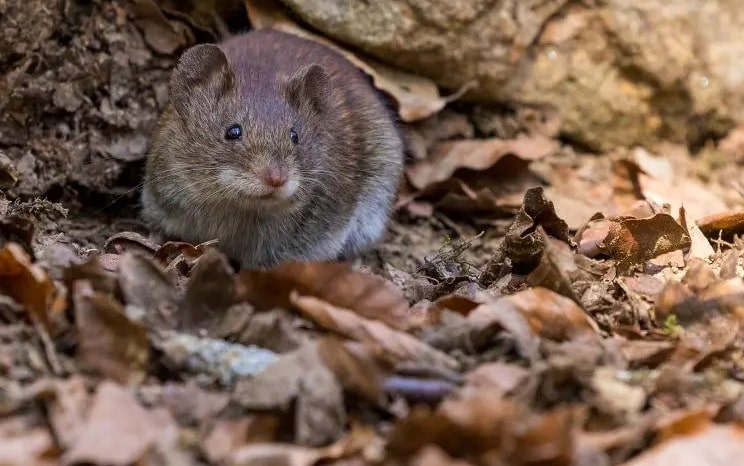Making sheep’s wool compost, also known as wool potting compost, is a sustainable way to repurpose sheep wool and create a nutrient-rich gardening material. Here’s a step-by-step guide on how to make sheep’s wool compost:
Contents
Materials You’ll Need:
- Raw sheep’s wool
- Compost bin or heap
- Green (nitrogen-rich) materials (e.g., grass clippings, kitchen scraps)
- Brown (carbon-rich) materials (e.g., dried leaves, straw)
- Water
- Shredder or scissors (optional)
Step-by-Step Instructions:
- Prepare the Wool:
- If the sheep’s wool is not already clean, remove any contaminants such as dirt, manure, or vegetable matter. You can do this by gently shaking or brushing the wool.
- Optionally, shred or cut the wool into smaller pieces. This will help it decompose faster in your compost pile. While wool fibers are durable, reducing their size increases the surface area, allowing microbes to work more efficiently.
- Set Up Your Compost Bin or Pile:
- Choose a suitable location for your compost bin or heap. It should be in a well-drained area with good airflow. You can use a compost bin, pile, or even a dedicated section of your garden for this purpose.
- Create Layers:
- Begin by creating layers in your compost pile. To make a balanced compost, alternate between green and brown materials. The green materials provide nitrogen for the decomposition process, while the brown materials provide carbon.
- Layer the Wool:
- Intermingle the shredded or cut sheep wool with the other materials. Place a layer of wool between the green and brown layers. You can add more wool with each new layer you create.
- Maintain Moisture:
- Ensure your compost pile maintains adequate moisture. Sheep wool is resistant to decomposition when dry, so it’s important to keep the compost damp but not soggy. Water the pile as needed, but avoid overwatering, which can lead to anaerobic conditions and unpleasant odors.
- Aerate the Compost:
- Regularly turn or aerate the compost pile to provide oxygen to the microbes responsible for decomposition. This is essential for the breakdown of wool and other materials.
- Be Patient:
- Understand that sheep wool takes a long time to decompose, often several years. Be patient and allow the composting process to work at its own pace. Over time, the wool will gradually break down and contribute to the overall quality of your compost.
- Harvest the Compost:
- When your compost has matured and turned into a dark, crumbly material that resembles rich soil, it’s ready to use in your garden. You can sift out any remaining wool fibers if they haven’t fully broken down, or you can incorporate them into your garden soil, as they will continue to break down and release nutrients.
Sheep’s wool compost is an excellent way to improve soil structure and provide slow-release nutrients for your plants. It’s a sustainable gardening practice that also reduces waste and promotes eco-friendly gardening.
Does sheep wool make good compost?
Composting is an environmentally friendly way to dispose of organic waste and create nutrient-rich soil. However, not all organic materials break down at the same rate. Sheep wool is one such material that decomposes slowly in a typical compost pile. This is because wool fibers are durable and resistant to decay.
To compost sheep wool effectively, you should follow these guidelines:
- Shred or Cut the Wool: To speed up the decomposition process, cut or shred the sheep wool into smaller pieces. Smaller particles have a larger surface area exposed to microbes, which accelerates decomposition.
- Mix with Other Materials: Sheep wool is considered a “brown” material in composting, meaning it’s carbon-rich. To create a balanced compost pile, mix the wool with “green” materials like grass clippings, fruit and vegetable scraps, or coffee grounds, which provide the necessary nitrogen for the decomposition process.
- Turn the Compost Pile: Regularly turning your compost pile helps aerate it, ensuring that the materials break down more efficiently. This is particularly important when composting materials that decompose slowly, like wool.
- Be Patient: It’s essential to be patient when composting sheep wool. Even with the right conditions, it may take several years for wool to fully break down. Over time, it will contribute to the overall organic matter in your compost, improving soil quality.
What can I do with raw sheep wool?
Raw sheep wool has a variety of practical and creative uses:
- Spinning: Many people use raw sheep wool to spin their own yarn. It can be dyed and crafted into various textile products, such as scarves, sweaters, and blankets.
- Felting: Wool is excellent for felting, a process that involves matting or pressing fibers together to create dense, fabric-like material. It’s used for making items like felted toys, decorative items, and even artwork.
- Insulation: Wool is a natural insulator with excellent thermal properties. It can be used as insulation in construction to keep buildings warm during the winter and cool in the summer. Wool insulation is also more sustainable and eco-friendly compared to synthetic alternatives.
- Mulch: Some gardeners use raw sheep wool as mulch in their gardens. Wool mulch can help conserve moisture, regulate soil temperature, and suppress weed growth. As it decomposes, it gradually releases nutrients into the soil, benefiting plants.
What is wool compost good for?
Wool compost, also known as “wool potting compost,” is a specialized compost mix that contains a significant amount of sheep wool. It’s commonly used in gardening for various purposes:
- Soil Improvement: Wool compost can improve soil structure by increasing its organic matter content. It enhances moisture retention and aeration, which are essential for healthy plant growth.
- Nutrient Release: Wool compost provides a slow-release source of nutrients to plants over an extended period. This makes it particularly useful for long-term gardening projects, such as perennial beds and orchards.
- Disease Resistance: Some gardeners believe that wool compost can help deter certain soil-borne diseases, as the wool fibers create a barrier that inhibits the spread of pathogens.
- Water Efficiency: The moisture-retaining properties of wool compost can reduce the need for frequent watering in your garden. This is especially beneficial in regions with water scarcity.
- Sustainability: Using wool compost is a sustainable choice, as it repurposes a waste material (sheep wool) and reduces the need for chemical fertilizers in gardening.
How long does sheep wool take to decompose?
Sheep wool takes a remarkably long time to decompose due to its sturdy fibers and natural resistance to decay. In a typical backyard compost pile, wool can persist for several years without fully breaking down. The exact decomposition timeline can vary depending on factors such as environmental conditions, the size of wool pieces, and the presence of microbial activity.
While wool decomposes slowly, its gradual breakdown can be an advantage when used as a long-term nutrient source in gardening. The slow release of nutrients from decomposing wool provides plants with a steady supply of nourishment.
Does sheep wool deter slugs?
Sheep wool can serve as a natural slug deterrent in your garden. Slugs are soft-bodied creatures, and they generally avoid crawling over coarse or scratchy surfaces due to the discomfort it causes them. Wool, with its rough and fibrous texture, can create a barrier that slugs are reluctant to cross. Here’s how you can use sheep wool to deter slugs:
- Mulch: Spread small pieces of raw sheep wool around the base of your plants as a mulch. This not only helps retain soil moisture and regulate temperature but also discourages slugs from reaching your plants.
- Wool Pellets: Some garden supply stores sell wool pellets specifically designed for slug control. These pellets are easy to scatter around your garden and act as a barrier against slugs.
However, it’s essential to note that while wool can help deter slugs, it may not provide 100% protection. Using a combination of slug control methods, such as beer traps, copper tape, and natural predators, can be more effective in keeping slugs away from your plants.
Can you compost 100% wool?
Yes, you can compost 100% wool, but as mentioned earlier, it decomposes slowly. It’s essential to shred or cut the wool into smaller pieces to help speed up the decomposition process.









